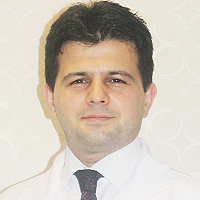Abstract
Review Article
Parabens: The love - hate molecule
PD Gupta* and K Pushkala
Published: 02 May, 2020 | Volume 3 - Issue 1 | Pages: 037-038
Parabens are the esters of para-hydroxybenzoic acid [1], mimicking oestrogen, the hormone which makes a woman a woman; women love it and men hate it.
Read Full Article HTML DOI: 10.29328/journal.cjog.1001047 Cite this Article Read Full Article PDF
References
- Freese E, Sheu CW, Galliers E. Function of lipophilic acids as antimicrobial food additives. Nature. 1973; 241: 321–325. PubMed: https://www.ncbi.nlm.nih.gov/pubmed/4633553
- Błędzka lD, Gromadzińska J, Wąsowicz W. Parabens. From environmental studies to human health. Environ Internl. 2014; 67: 27-42. PubMed: https://www.ncbi.nlm.nih.gov/pubmed/24657492
- Chen J, Ahn KC, Gee NA, Gee SJ, Hammock BD, et al. Antiandrogenic properties of parabens and other phenolic containing small molecules in personal care products. Toxicol Applied pharmacol. 2007; 221; 278–284. PubMed: https://www.ncbi.nlm.nih.gov/pubmed/17481686
- Karwacka A, Zamkowska D, Radwan M, Jurewicz J. Exposure to modern, widespread environmental endocrine disrupting chemicals and their effect on the reproductive potential of women: an overview of current epidemiological evidence. Hum Fertil (Camb). 2019; 31:1-25. PubMed: https://www.ncbi.nlm.nih.gov/pubmed/28758506
- Huixia Li, Zheng J, Wang H, Huang G, Huang Q, et al. Maternal cosmetics use during pregnancy and risks of adverse outcomes: a prospective cohort study. Sci Rep. 2019; 9: 8030.
- White M, Gates O. Decisions of Courts in Cases Under the Federal Food and Drugs Act, Washington DC. GPO, 1934; 1204.
- Geer LA, Pycke BFG, Waxenbaum J, Sherer DM, Abulafia O, et al. Association of birth outcomes with fetal exposure to parabens, triclosan and triclocarban in an immigrant population in Brooklyn, New York. J Hazardous Materials. 2017; 323: 177-183. PubMed: https://www.ncbi.nlm.nih.gov/pubmed/27156397
- Smarr MM, Sundaram R, Honda M, Kannan K, Buck Louis GM. Urinary concentrations of parabens and other antimicrobial chemicals and their association with couples’ fecundity. Environ Health Perspect. 2016; 124: 730–736. PubMed: https://www.ncbi.nlm.nih.gov/pubmed/27286252
- Manservisi F, Gopalakrishnan K, Tibaldi E, Hysi A, Iezzi M, et al. Effect of maternal exposure to endocrine disrupting chemicals on reproduction and mammary gland development in female Sprague-Dawley rats. Reproductive Toxicology. 2015; 54: 110-119. PubMed: https://www.ncbi.nlm.nih.gov/pubmed/25554385
- Guerra MT, Sanabria M, Leite GA, Borges CS, Cucielo MS, et al. Maternal exposure to butyl paraben impairs testicular structure and sperm quality on male rats. Environ Toxicol. 2017; 32:1273-1289. PubMed: https://www.ncbi.nlm.nih.gov/pubmed/27444704
- Oishi S. Effects of butylparaben on the male reproductive system in rats. Toxicol Ind Health. 2001; 17: 31-39. PubMed: https://www.ncbi.nlm.nih.gov/pubmed/12004923
- Ali EH, Elgoly AH. Combined prenatal and postnatal butylparaben exposure produces autism-like symptoms in offspring: comparison with valproic acid autistic model. Pharmacol Biochem Behav. 2013; 111: 102-110. PubMed: https://www.ncbi.nlm.nih.gov/pubmed/24036472
- Kawaguchi M, Irie K, Morohoshi K, Watanabe G, Taya K, et al. Maternal isobutyl-paraben exposure alters anxiety and passive avoidance test performance in adult male rats. Neurosci Res. 2009; 65: 136-140. PubMed: https://www.ncbi.nlm.nih.gov/pubmed/19560493
- Gupta PD, Pushkala K. Increasing woman's health concern due to xenoestrogens and parabens: a review. J Cell Tissue Res. 2019; 19 6829-6832.
Similar Articles
-
TMD and pregnancy?Afa Bayramova*. TMD and pregnancy?. . 2018 doi: 10.29328/journal.cjog.1001001; 1: 001-006
-
Is It Possible to End Female Circumcision in Africa?Fiona Dunn*. Is It Possible to End Female Circumcision in Africa? . . 2018 doi: 10.29328/journal.cjog.1001002; 1: 007-013
-
Screening of Gestational diabetes mellitusGehan Farid*,Sarah Rabie Ali*,Reem Mohammed Kamal. Screening of Gestational diabetes mellitus . . 2018 doi: 10.29328/journal.cjog.1001003; 1: 014-023
-
The Case of the Phantom Trophoblastic TumorBenedict B Benigno*. The Case of the Phantom Trophoblastic Tumor. . 2018 doi: 10.29328/journal.cjog.1001004; 1: 024-025
-
Maternal and fetal outcome of comparative study between old & adopted new value of screening of Gestational Diabetes Mellitus in tertiary centre in Saudi ArabiaGehan Farid*,Reem Mohammed Kamal*,Mohamed AH Swaraldahab,Sarah Rabie Ali. Maternal and fetal outcome of comparative study between old & adopted new value of screening of Gestational Diabetes Mellitus in tertiary centre in Saudi Arabia. . 2018 doi: 10.29328/journal.cjog.1001005; 1: 026-034
-
Small cell carcinoma of the ovary with hypercalcemia: Case report and review of the literatureGerday A*,Marbaix E,Squifflet JL,Mazzeo F,Luyckx M. Small cell carcinoma of the ovary with hypercalcemia: Case report and review of the literature. . 2018 doi: 10.29328/journal.cjog.1001006; 1: 035-044
-
Perinatal Morbidity & Mortality following repeat Cesarean section due to five or more previous Cesarean Section done in Tertiary centre in KSASomia Osman,Gehan Farid*,Reem Mohamed Kamal,Sarah Rabie Ali,Mohamed AH Swaraldahab. Perinatal Morbidity & Mortality following repeat Cesarean section due to five or more previous Cesarean Section done in Tertiary centre in KSA. . 2018 doi: 10.29328/journal.cjog.1001007; 1: 045-051
-
A Rare case of synchronous primary malignancies of gall bladder and ovaryRidhi Narang*,T Das,M Dagar,M Srivastava,S Bhalla,I Ganguli. A Rare case of synchronous primary malignancies of gall bladder and ovary. . 2018 doi: 10.29328/journal.cjog.1001008; 1: 052-055
-
Effectiveness of the lifestyle modifications in prevention and control of sexually transmitted diseases (STDs): Focus on Islamic lifestyleMohammad Rabbani Khorasgani*. Effectiveness of the lifestyle modifications in prevention and control of sexually transmitted diseases (STDs): Focus on Islamic lifestyle. . 2018 doi: 10.29328/journal.cjog.1001009; 1: 056-057
-
Septic arthritis of left shoulder in pregnancy following minor hand injuryNeelam Agrawal,Rhoughton Clemmey,Shamma Al-Inizi*. Septic arthritis of left shoulder in pregnancy following minor hand injury. . 2018 doi: 10.29328/journal.cjog.1001010; 1: 058-060
Recently Viewed
-
Physiotherapy Undergraduate Students’ Perception About Clinical Education; A Qualitative StudyPravakar Timalsina*,Bimika Khadgi. Physiotherapy Undergraduate Students’ Perception About Clinical Education; A Qualitative Study. J Nov Physiother Rehabil. 2024: doi: 10.29328/journal.jnpr.1001063; 8: 043-052
-
Clinical Significance of Anterograde Angiography for Preoperative Evaluation in Patients with Varicose VeinsYi Liu,Dong Liu#,Junchen Li#,Tianqing Yao,Yincheng Ran,Ke Tian,Haonan Zhou,Lei Zhou,Zhumin Cao*,Kai Deng*. Clinical Significance of Anterograde Angiography for Preoperative Evaluation in Patients with Varicose Veins. J Radiol Oncol. 2025: doi: 10.29328/journal.jro.1001073; 9: 001-006
-
Regional Anesthesia Challenges in a Pregnant Patient with VACTERL Association: A Case ReportUzma Khanam*,Abid,Bhagyashri V Kumbar. Regional Anesthesia Challenges in a Pregnant Patient with VACTERL Association: A Case Report. Int J Clin Anesth Res. 2025: doi: 10.29328/journal.ijcar.1001027; 9: 010-012
-
Cystoid Macular Oedema Secondary to Bimatoprost in a Patient with Primary Open Angle GlaucomaKonstantinos Kyratzoglou*,Katie Morton. Cystoid Macular Oedema Secondary to Bimatoprost in a Patient with Primary Open Angle Glaucoma. Int J Clin Exp Ophthalmol. 2025: doi: 10.29328/journal.ijceo.1001059; 9: 001-003
-
Navigating Neurodegenerative Disorders: A Comprehensive Review of Current and Emerging Therapies for Neurodegenerative DisordersShashikant Kharat*, Sanjana Mali*, Gayatri Korade, Rakhi Gaykar. Navigating Neurodegenerative Disorders: A Comprehensive Review of Current and Emerging Therapies for Neurodegenerative Disorders. J Neurosci Neurol Disord. 2024: doi: 10.29328/journal.jnnd.1001095; 8: 033-046
Most Viewed
-
Evaluation of Biostimulants Based on Recovered Protein Hydrolysates from Animal By-products as Plant Growth EnhancersH Pérez-Aguilar*, M Lacruz-Asaro, F Arán-Ais. Evaluation of Biostimulants Based on Recovered Protein Hydrolysates from Animal By-products as Plant Growth Enhancers. J Plant Sci Phytopathol. 2023 doi: 10.29328/journal.jpsp.1001104; 7: 042-047
-
Sinonasal Myxoma Extending into the Orbit in a 4-Year Old: A Case PresentationJulian A Purrinos*, Ramzi Younis. Sinonasal Myxoma Extending into the Orbit in a 4-Year Old: A Case Presentation. Arch Case Rep. 2024 doi: 10.29328/journal.acr.1001099; 8: 075-077
-
Feasibility study of magnetic sensing for detecting single-neuron action potentialsDenis Tonini,Kai Wu,Renata Saha,Jian-Ping Wang*. Feasibility study of magnetic sensing for detecting single-neuron action potentials. Ann Biomed Sci Eng. 2022 doi: 10.29328/journal.abse.1001018; 6: 019-029
-
Pediatric Dysgerminoma: Unveiling a Rare Ovarian TumorFaten Limaiem*, Khalil Saffar, Ahmed Halouani. Pediatric Dysgerminoma: Unveiling a Rare Ovarian Tumor. Arch Case Rep. 2024 doi: 10.29328/journal.acr.1001087; 8: 010-013
-
Physical activity can change the physiological and psychological circumstances during COVID-19 pandemic: A narrative reviewKhashayar Maroufi*. Physical activity can change the physiological and psychological circumstances during COVID-19 pandemic: A narrative review. J Sports Med Ther. 2021 doi: 10.29328/journal.jsmt.1001051; 6: 001-007

HSPI: We're glad you're here. Please click "create a new Query" if you are a new visitor to our website and need further information from us.
If you are already a member of our network and need to keep track of any developments regarding a question you have already submitted, click "take me to my Query."

















































































































































